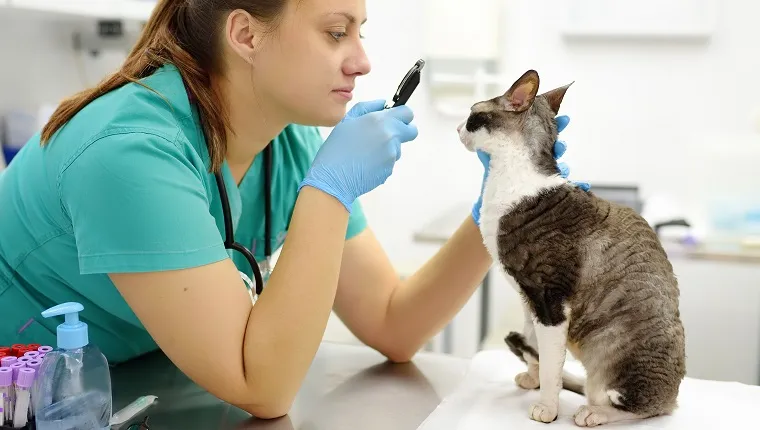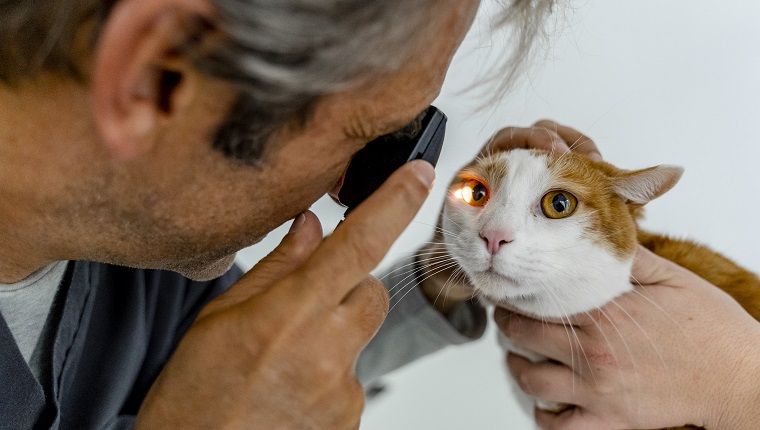Retinal hemorrhage in cats is a medical condition that involves the inner lining of a cat’s eye becoming susceptible to bleeding. It can result in a loss of vision and even retinal detachment.
The condition can arise due to a range of circumstances including suffering from trauma. Additionally, cats with high blood pressure, which often affects elderly cats more than others, are more at risk.
If you see signs that your kitty might be at risk of developing eye issues, then you must consult your veterinarian for a proper diagnosis and course of treatment. Here’s what you should know about the symptoms, causes, and treatments of retinal hemorrhage in cats.
Symptoms Of Retinal Hemorrhage In Cats
Retinal hemorrhage in cats can produce a range of symptoms. Some of the most common symptoms include:
- Loss of vision
- Pupils turning a white color
- Bumping into objects
- Bruises around the body
- Urine and stools with blood present
Causes Of Retinal Hemorrhage In Cats

Retinal hemorrhage in cats often arises due to genetic conditions. Beyond genetic issues, some of the other most common causes include:
- Suffering a trauma
- High blood pressure
- Blood disorders
- Infections (bacterial and fungal)
- Heart and kidney disease
- Diabetes
Additionally, elderly cats have a higher risk of developing this condition because they’re also more likely to suffer from high blood pressure.
Treatments For Retinal Hemorrhage In Cats
If you start to think that your cat might be suffering from retinal hemorrhage, your veterinarian will carry out a full physical examination and also ask detailed questions about your kitty’s medical history.
The vet will order blood, urine, and electrolyte tests when forming a diagnosis.
Additionally, they’ll examine your cat’s retinas as part of a thorough ophthalmic examination. The vet may also recommend ultrasounds of the eye and analysis of eye fluid.
For treatment, the course of action will depend on the underlying condition. In some cases, vets can prescribe medicine to alleviate the issue. As ever, if your vet prescribes medication for your cat, it is vital that you follow the precise dosage and frequency instructions, along with completing the full course of medicine.
In severe cases, vets may suggest surgery on the retina, especially if the retina needs to be reattached.
While your cat is recovering at home, make environmental changes to take into account any loss of vision your cat might be suffering from. Additionally, keep up with regular vet appointments to monitor your cat’s recovery and the health of their eyesight.
Has your cat ever developed retinal hemorrhage? How did your vet help your kitty’s eyes recover? Tell us all about it in the comments below.









